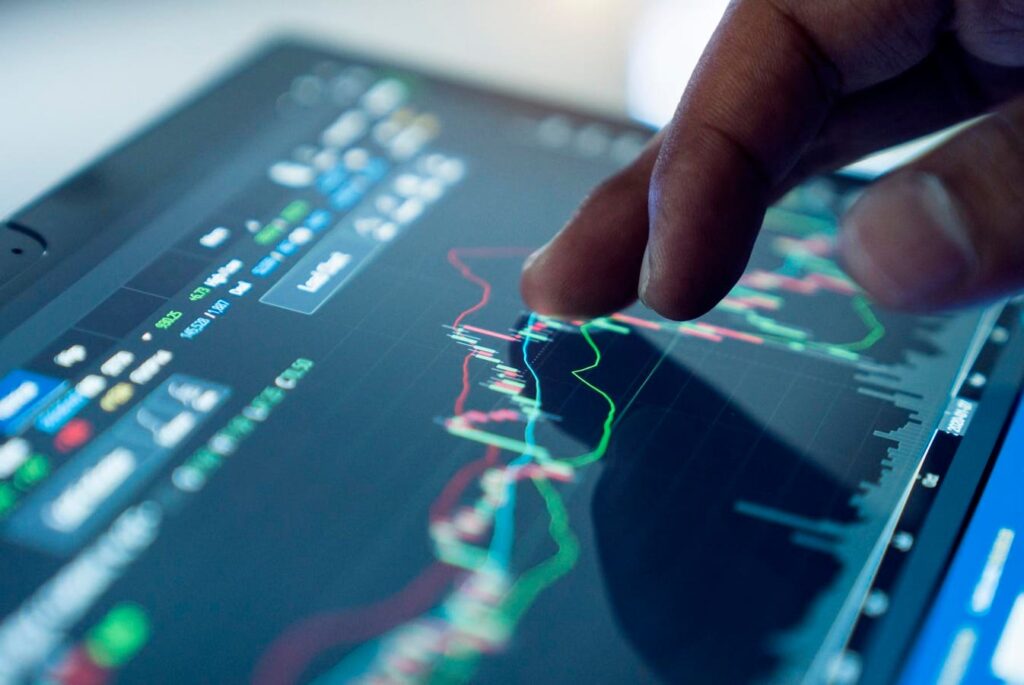Sometimes there’s a dividend play out there that we love—but it’s just the wrong time to buy it.
That’s the story with an 11.6%-paying closed-end fund (CEF) that’s pretty well-known (for a CEF, that is!). It’s the Gabelli Equity Trust (GAB), run by Mario Gabelli, whom you may have seen on the cable news channels over the years.
To get at why we’re dodging this well-run fund now, we need to first talk about a phrase you may have heard a lot more from said business channels lately: “soft data.”
Ring a bell? Basically it refers to numbers that are more about feelings (or “vibes” as the kids call them these days) that people have about the economy: surveys of consumers and companies, expectations of economic conditions in the future, that sort of thing.
This is different from “hard” data, which reflects what’s actually happening. Think about it as the difference between asking someone if they’re cutting back on their spending and actually looking through their bank accounts to see if they really are.
Soft data is notoriously unreliable and often not taken all that seriously. But these days, it’s worth taking a closer look at, because it’s breaking with the “hard” data in major ways. This is where our sell (or avoid if you don’t already own it) case on GAB starts.
Why the “Soft Data” Says This 11.6% Payer Is a Sell
One of the most commonly reported “soft” data points out there is the University of Michigan Consumer Sentiment Survey, which has been dropping fast since the start of 2025 and really plunged in March.
That kind of decline suggests an imminent recession. But let’s take a beat before we jump to that conclusion, because there’s more to the story here.
Since the pandemic, this indicator has been stuck below where it was pre-pandemic. The reasons for consumers’ ongoing lousy mood have changed over the years: Obviously the pandemic caused sentiment to fall in 2020. The end of lockdowns helped it improve in 2021, but then the inflation/recession panic of 2022 caused it to drop far lower than it was during the pandemic.
That last fact is astonishing enough on its own. And while consumer sentiment improved since then, we still haven’t even reached levels last seen when people were locked in their homes in mid-2020!
What’s going on here?
Simply put, Americans just aren’t as optimistic as they were pre-COVID. So it isn’t surprising that this indicator is so glum.
Plus, even though consumer sentiment has dipped lately, we’re still only around mid-2024 levels, and we’re higher than we were around 2022 and most of 2023. So if you read about depressing soft data, keep in mind that the actual numbers aren’t that bad, historically speaking.
CEOs and corporate execs? Well, they’re in a funk of their own, as recent manufacturing and services-sector sentiment indicators have shown.
What, exactly, does all this mean for investors?
To answer that, let’s look at some data the Financial Times pulled from a specific source: JPMorgan Chase & Co. (JPM), which released its credit card net charge-off rates. These basically show how many consumers aren’t paying their credit card bills.
That number has climbed.
Here, too, context is key, though, as despite the rise, non-payments are still below where they were in 2011, the start of a decade in which the S&P 500 returned 263%!
The Danger to Certain (Overvalued!) Stocks and Funds—Including GAB
The real risk here is that more short-term volatility will kick in as this “vibe-induced wall of worry” causes some investors to sell, triggering others to sell, and so on. That’s what happened in 2022, and that’s what we’ve seen in the last few months.
Of course, this is a buying opportunity for the patient, but not all assets are good buys in such an environment.
Which brings me back to 11.6%-yielding GAB. It’s a value-focused CEF that holds great stocks like American Express (AXP), Mastercard (MA) and Deere & Co. (DE). That makes it a solid buy most of the time—but not now. Here’s why:
A key thing to keep in mind with CEFs is that they tend to have a fixed share count for their entire lives, and as a result can trade at different levels in relation to the value of the investments they hold.
In GAB’s we’re looking at an 8.6% premium. In other words, buying GAB now would mean buying Mastercard, American Express and the like for more than we would if we simply bought them on the open market.
Not good! And it’s why we really want to avoid GAB now, with more volatility likely.
Worse, GAB’s premium has shot up in recent weeks, not because the fund’s market price is skyrocketing (it’s flat year-to-date, including reinvested dividends), but because the selloff has caused its NAV (in orange below) to fall steeply, while its market price (in purple) has levitated.
A fund that has an unusually high premium, a total price return that’s hovered near breakeven year to date and a negative total NAV return year to date is exactly the kind of fund that’s perfectly set for a sudden, steep selloff when investors notice. And if the “vibes” stay depressed, investors will notice sooner rather than later.
But there is a silver lining here: When that moment comes, the mainstream crowd will probably overreact to the downside, creating a big discount on GAB. That’ll be a great time to buy, so put GAB on your watch list while we wait for that to happen.
Michael Foster is the Lead Research Analyst for Contrarian Outlook. For more great income ideas, click here for our latest report “Indestructible Income: 5 Bargain Funds with Steady 8.6% Dividends.”
Disclosure: none
Read the full article here
















